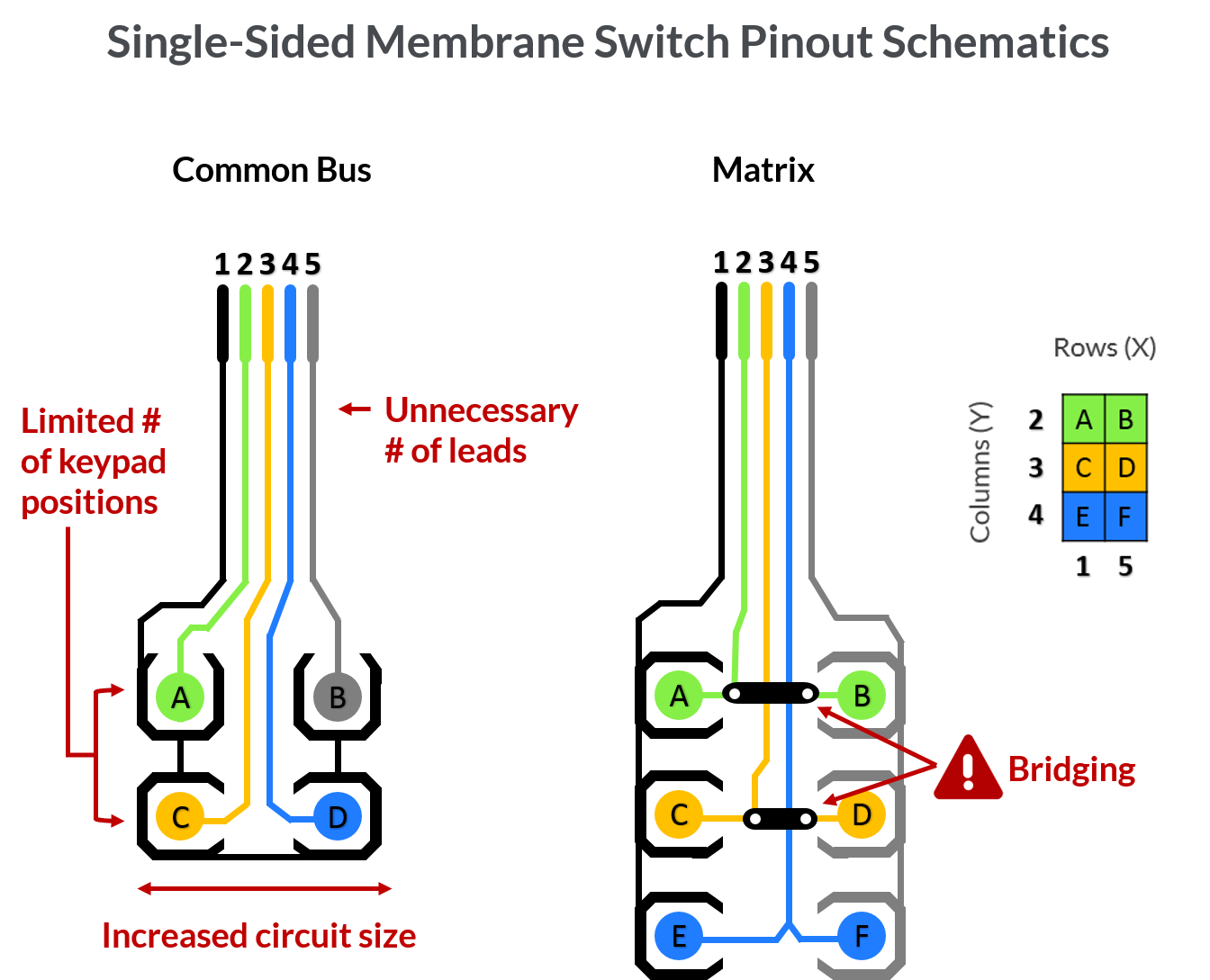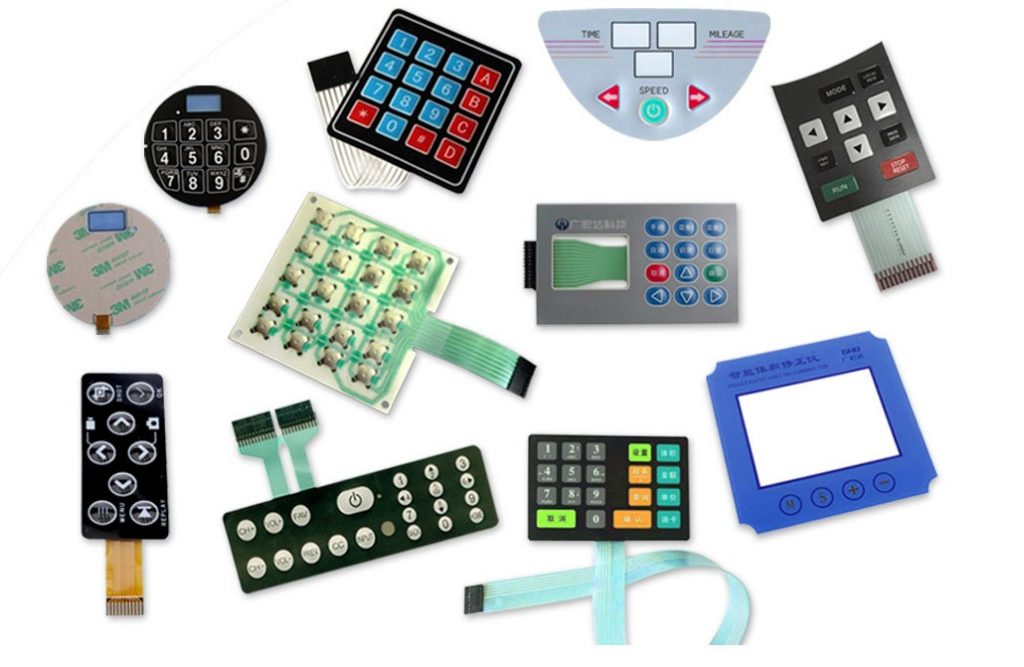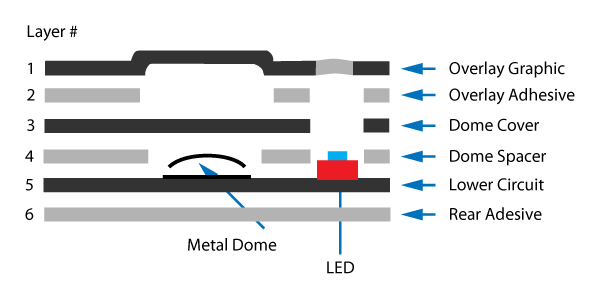Why membrane switch technology are reshaping the dynamics of healthcare equipment
The Manufacturing Process Behind Membrane Layer Switch: What You Need to Know
The manufacturing procedure behind membrane switches over combines mindful design, product selection, and quality control. It begins with understanding the intricacies of membrane button layout and proceeds with numerous stages, consisting of material selections and printing strategies. Each stage plays a crucial function in making certain capability and resilience. The intricacies of layer construction and the strenuous screening standards might expose understandings that are not instantly evident. What lies past these fundamental components?
Comprehending Membrane Layer Change Design
Although membrane layer switches may appear simple initially glimpse, their layout involves detailed considerations that guarantee performance and durability. The style process starts with a detailed understanding of customer demands, including the user interface's desired application and environmental factors. Ergonomics is a crucial element, as the layout must promote ease of usage while making sure that responsive responses fulfills user expectations.Moreover, the layering of elements, such as visuals overlays, sticky layers, and conductive traces, need to be specifically crafted. membrane switch. This split configuration not just influences the switch's responsiveness but likewise affects its longevity. Interest is provided to the sealing techniques employed to safeguard against moisture and dirt, which could jeopardize efficiency. Furthermore, design factors to consider extend to aesthetics, where shade schemes and visual clearness boost user experience. Ultimately, the style of membrane switches equilibriums functionality, individual experience, and toughness, guaranteeing that they meet the demands of different applications properly
Products Utilized in Membrane Layer Switch Over Production
When selecting products for membrane layer button manufacturing, it is vital to ponder both efficiency and resilience. The main products consist of polyester and polycarbonate movies, which give flexibility and stamina. These films are usually covered with sticky to ensure correct bonding to substratums. Conductive inks, typically composed of silver or carbon, are critical for producing electrical connections within the button, enabling trustworthy operation.Additionally, a safety layer, such as a tough layer, is regularly applied to boost scratch resistance and long life. The option of backing material, such as acrylic or foam, can considerably impact the switch's responsive feeling and total customer experience. Different ecological factors, including temperature and humidity, ought to direct material selection to assure peak efficiency in certain applications. Eventually, the ideal mix of products adds to the membrane button's functionality and life expectancy, making informed selections essential for suppliers.
The Printing Process: Creating Graphics and Text
The printing process in membrane switch production plays a substantial duty in producing high-grade graphics and text. Numerous visuals layout techniques are used to ensure visual appeal and capability, while cautious ink choice approaches are essential for toughness and efficiency. Understanding these aspects is basic for achieving best cause membrane button layout.
Graphic Design Techniques
Graphic design strategies play an important function in the printing procedure of membrane layer switches, as they define exactly how graphics and message will ultimately show up on the end product. Reliable graphic layout involves the calculated use layouts, colors, and typefaces to boost readability and visual appeal. Designers commonly utilize vector graphics for scalability, making certain that photos remain sharp at numerous dimensions. Furthermore, interest to contrast and placement is essential, as it affects individual interaction and visual quality. The incorporation of branding aspects, such as logos, need to be taken care of with care to keep brand name stability. In general, thoughtful visuals design techniques add considerably to the capability and attractiveness of membrane layer buttons, impacting user experience and product efficiency.
Ink Option Approaches
Picking the appropriate ink is vital for attaining the desired aesthetic quality and sturdiness in membrane layer button manufacturing. Different ink types are used, consisting of solvent-based, water-based, and UV-curable inks. Each type supplies distinct qualities, such as versatility, adhesion, and resistance to environmental aspects. Solvent-based inks are typically preferred for their durability and vivid shades, while water-based inks are more ecologically pleasant yet might have constraints in attachment. UV-curable inks provide quick healing and durable efficiency. Furthermore, shade matching methods ensure that the selected inks line up with style specifications. Inevitably, the choice of ink should consider factors such as application approach, substrate compatibility, and end-use requirements to accomplish exceptional lead to membrane switch graphics and message.
Layer Building and Assembly

Material Option Process
A careful choice of products is necessary in the production procedure of membrane buttons, as it straight affects capability and longevity. The main products used consist of polyester, polycarbonate, and various conductive inks. Polyester is typically favored for its superb resistance to chemicals and abrasion, making it appropriate for harsh atmospheres. Polycarbonate, on the various other hand, offers superior clarity and influence resistance, which is helpful for applications calling for visibility and effectiveness. Conductive inks, generally composed of silver or carbon, are crucial for creating dependable electrical paths. In addition, the selection of glue products affects the total integrity of the switch - membrane switch. Reviewing elements such as ecological exposure, responsive comments, and visual needs overviews makers in choosing the most effective products for their certain applications
Layer Adhesion Techniques
Adhering layers in membrane layer switch building is an essential procedure that assures functionality and durability. Numerous adhesion methods are utilized to safeguard excellent bonding in between layers, which generally include making use of adhesives, warmth, and stress. Pressure-sensitive adhesives (PSAs) are commonly used for their ease of application and instant bonding capacities. In addition, thermal bonding methods can be applied, where warmth is used to activate sticky homes, protecting a solid bond. The option of bond approach greatly depends upon the products entailed and the specific application needs of the membrane layer switch. Appropriate positioning and uniform application of adhesives are vital to protect against defects, securing the button runs successfully throughout check out this site its intended life expectancy.
Quality Assurance Measures
Assuring quality assurance during the layer building and construction and setting up of membrane layer buttons is vital for keeping performance and dependability. This procedure generally entails numerous critical procedures, including extensive assessments at each phase of manufacturing. Suppliers utilize sophisticated testing techniques, such as peel examinations and bond assessments, to verify the stability of layer bonds. In addition, aesthetic evaluations are performed to determine any type of defects in printing or material disparities. Environmental problems, such as temperature level and humidity, are meticulously kept track of to guarantee perfect healing and attachment. Routine calibration of equipment aids preserve precise production standards. By applying these quality control actions, manufacturers can considerably minimize the risk of item failure, ensuring that the final membrane layer switches satisfy the required specifications and consumer assumptions.
Checking and Top Quality Control Procedures

Advancements in Membrane Change Innovation
As developments in modern technology remain to evolve, membrane switches are profiting from innovative advancements that improve their performance and customer experience. One remarkable advancement is the integration of capacitive touch technology, which enables more responsive and intuitive interface. This shift not just boosts aesthetics however additionally minimizes mechanical wear and tear, expanding the lifespan of the switches.Additionally, innovations in visuals overlay products have actually led to boosted toughness and resistance to ecological elements such as moisture and UV light. These products now supply boosted quality and brightness, their explanation additional raising the aesthetic appeal.Furthermore, the unification of wise modern technology is transforming membrane layer switches over right into interactive control panels, allowing connectivity with IoT tools. This connectivity promotes a smooth individual experience, paving the method for applications in numerous markets, from health care to customer electronics. Jointly, these developments placement membrane changes as vital elements in modern-day tool layout.
Often Asked Inquiries
Exactly how Lengthy Does the Membrane Switch Over Manufacturing Process Take?
The duration of the membrane layer switch manufacturing procedure can vary significantly. Factors such as complexity, products used, and production quantity influence timelines, with regular production varying from a few days to several weeks for completion.
What Are the Typical Applications for Membrane Layer Switches?
Membrane switches are frequently utilized in various markets, consisting of automotive controls, household home appliances, medical tools, and consumer electronic devices (membrane switch). Their convenience and sturdiness make them ideal for applications requiring easy to use interfaces and reliable performance in varied environments
Can Membrane Switches Be Personalized for Certain Needs?

What Is the Life expectancy of a Normal Membrane Switch Over?
The life-span of a common membrane button differs, however generally, it varies from 1 to 5 million cycles. navigate here Variables such as usage, setting, and worldly quality substantially influence durability and general performance over time.

Are Membrane Layer Changes Eco-friendly?
The environmental kindness of membrane layer switches over differs. Some materials used might not be recyclable, while others can be eco-friendly. The overall effect relies on producing practices and materials, necessitating mindful factor to consider throughout option and disposal. The manufacturing process behind membrane switches combines careful style, product option, and high quality control. It begins with understanding the intricacies of membrane layer switch style and advances via numerous stages, including product selections and printing strategies. When picking products for membrane button production, it is important to consider both performance and longevity. A cautious selection of materials is crucial in the production process of membrane switches, as it straight affects capability and durability. The option of attachment technique greatly depends on the products included and the certain application requirements of the membrane button.